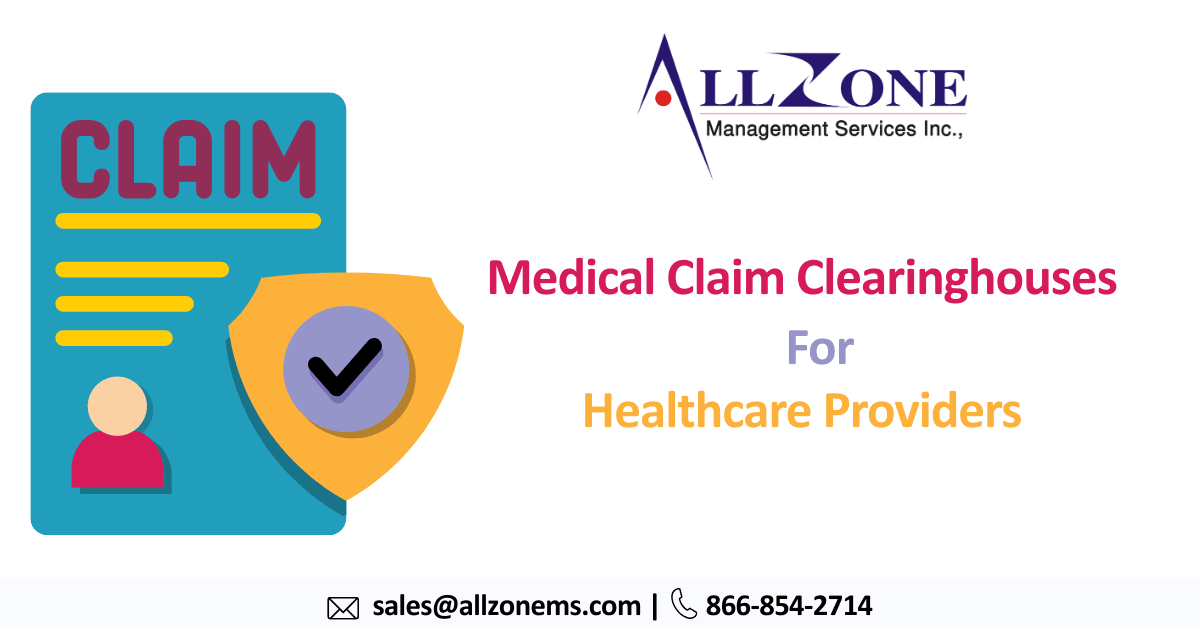Medical claim clearinghouses enhance the efficiency of claim submissions for healthcare providers, thereby reducing costs and improving payment accuracy. Each year, healthcare payers and providers exchange billions of claims to finalize patient encounters, a number that continues to rise.
As claim volumes increase annually (except for a dip in 2021 due to the COVID-19 pandemic), payers and providers face the challenge of managing these higher volumes with fewer resources, more complex reimbursement models, and rising costs.
Clearinghouses help alleviate some of this pressure by serving as intermediaries. They facilitate the submission of claims from providers to payers, streamlining the reimbursement process through advanced technology, efficient workflows, and specialized expertise.
What Exactly is a Medical Claim Clearinghouses?
The Health Resources & Services Administration (HRSA) defines a healthcare clearinghouse as an organization that facilitates the secure exchange of healthcare data between providers and payers (insurance companies).
Here’s how clearinghouses achieve this:
-
- Translation Experts: Clearinghouse services translate between different data formats used by providers and payers. This ensures compatibility and reduces errors during claim submission.
- Standardization Champions: They convert claims into the HIPAA-mandated 837 format, a standardized system for electronic claim submission, streamlining processing for payers.
- Faster Payments: By ensuring accurate and standardized claims, clearinghouses expedite the entire reimbursement process, leading to faster payments for providers.
HIPAA Regulations and medical claim clearinghouses
The Health Insurance Portability and Accountability Act (HIPAA) plays a crucial role in how clearinghouses operate. HIPAA regulations:
-
- Safeguard Patient Data: Ensure patient health information is protected throughout the clearinghouse process.
- Standardization for Efficiency: Promote the use of standardized formats like the 837 standard to streamline healthcare administration.
Streamlining Medical Billing with Electronic Claims and Clearinghouses
The Challenge of Paper Claims:
As medical claims pile up, managing them efficiently becomes a struggle. Paper-based submissions are error-prone and slow down the reimbursement process. Standardizing claim formats and reducing manual data entry are crucial for streamlining medical billing.
Benefits of Electronic Claims:
Switching to electronic claim submission offers significant advantages:
-
- Reduced Errors: Standardized formats like the 837 data standard ensure all necessary information is present, minimizing errors caused by manual data entry.
- Faster Reimbursement: Electronic submission using HIPAA standards speeds up claim processing compared to paper-based methods.
- Cost Savings: Studies show significant cost savings from electronic claims. Providers can potentially reclaim time and resources wasted on paper claims.
The Role of medical claim clearinghouses:
Medical claim clearinghouses play a vital role in facilitating electronic claims submission. They act as intermediaries between providers and payers, offering a range of valuable services:
-
- Standardization: Clearinghouses can convert non-standard claims into the HIPAA-compliant 837 format, ensuring compatibility with payer systems.
- Claim Scrubbing: Technology used by clearinghouses identifies and corrects coding errors in claim data, maximizing claim acceptance rates.
- Batch Processing: Submitting claims in batches through clearinghouses saves time and streamlines the process, especially for high-volume providers.
- Multi-Payer Routing: Clearinghouses route claims to the correct payers, including commercial plans, Medicare, and Medicaid, eliminating the need for separate submissions.
- Claim Tracking and Reporting: Providers can monitor claim status, identify rejections, and track payments using tools provided by clearinghouses.
- Electronic Remittance Advice (ERA): Clearinghouses deliver detailed payment information (ERA) from payers to providers, simplifying claim reconciliation.
- Eligibility Verification: Real-time verification services ensure coverage and benefits are confirmed before services are rendered, minimizing chances of denied claims.
- Coordination of Benefits (COB): Clearinghouse assistance helps manage COB when patients have multiple insurance plans, ensuring claims are submitted to the right payers in the correct order.
- Denial Management: Tools and services can help identify denial reasons, resubmit corrected claims, and manage appeals.
- Compliance and Security: Reputable clearinghouses guarantee HIPAA compliance for all transactions, protecting patient data privacy and security.
By leveraging electronic claims and clearinghouse services, healthcare providers can significantly improve medical billing efficiency, reduce costs, and accelerate reimbursements.
Cybersecurity Concerns Spark Focus on Clearinghouse Selection
Healthcare providers have long relied on clearinghouses to streamline claims processing and reimbursement. However, the recent cyberattack on Change Healthcare, a major clearinghouse, has highlighted the critical importance of compliance and security when choosing such a partner.
The High Cost of Downtime
The February 2024 attack on Change Healthcare, which processes roughly $2 trillion in claims annually, left many providers scrambling. Disruptions to their medical claims processing systems resulted in lost revenue and additional staff burden. The attack underscored the vulnerability of relying on a single clearinghouse, prompting some experts to advocate for diversification.
Compliance and Security Take Center Stage
In the wake of the attack, healthcare providers are reevaluating their clearinghouse partnerships. Certifications like SOC 2 (System and Organization Controls 2) are becoming a top priority, ensuring robust security measures are in place.
Benefits of Using a Clearinghouse
While not mandatory, clearinghouses offer significant advantages:
-
- Efficiency: Submitting claims through a single platform to all payers saves time and effort. Batching capabilities further streamline the process.
- Reduced Errors: Claim scrubbing technology identifies errors before submission, minimizing denials.
- Cost Savings: Clearinghouses can bring down administrative costs through automation and optimized workflows. Faster reimbursements also improve cash flow.
- Deeper Insights: Access to claim trends like acceptance rates and payment statuses provides valuable data for optimizing revenue cycles.
Balancing Efficiency with Risk Management
The recent attack serves as a reminder that third-party vendors introduce inherent risks. Careful due diligence is crucial when selecting a clearinghouse partner(s). Providers should prioritize a balance between efficiency and robust security measures when making this important decision.
In conclusion, medical claim clearinghouses act as a bridge between providers and payers, leveraging technology and expertise to smooth claim submissions and accelerate reimbursements in the ever-growing healthcare landscape.

